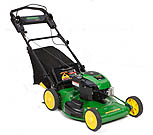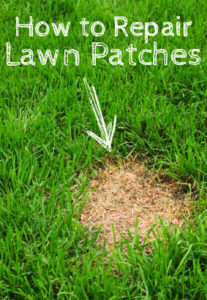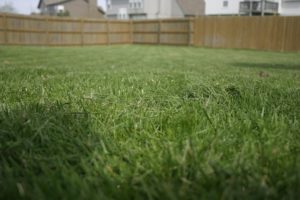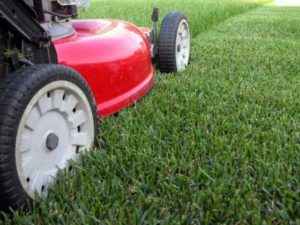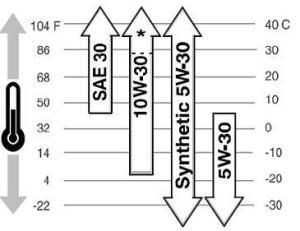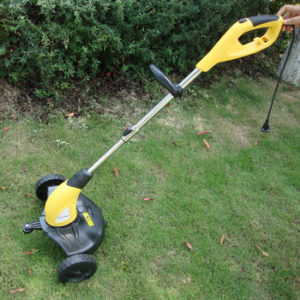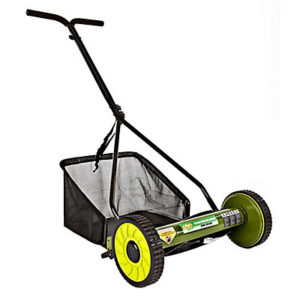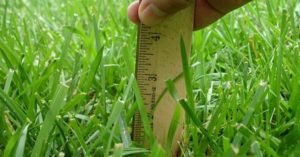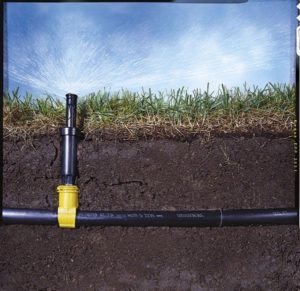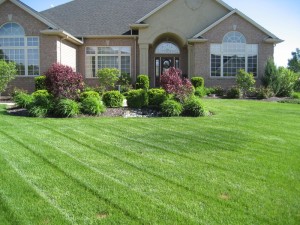 People accept the fact that they must mow and water to maintain the health of their life. But some may question the need for fertilizer. They should Fertilize Your Lawn.
People accept the fact that they must mow and water to maintain the health of their life. But some may question the need for fertilizer. They should Fertilize Your Lawn.
Lawn grasses live in an unnatural environment. The grass plants are crowded together. They compete with each other, along with neighboring trees and shrubs, for water and nutrients. They are mowed regularly, which is highly irregular in nature. Their clippings, a source of nutrients are often removed. That’s why it is important to fertilize your lawn.
Because of this competition and the unnatural demands placed on lawns, they must be fertilized. Just as a balanced diet works best for people and animals, the same is true for lawns. They need fertilizer for sustenance. When properly fertilized, the lawn maintains good color, density, and vigor. It does not easily succumb to insects, weeds, or diseases. When under fertilized, the lawn is less attractive. It also is considerably more susceptible to environmental stress and damage.
Fertilize Your Lawn – The nutrients a lawn needs
16 different mineral elements are essential to the growth of all awns. Some are common, such as oxygen from air and hydrogen from water. Others, such as zinc or boron, are needed in only the minuscule amounts usually found naturally in most soils.
Nitrogen: this is by far the most important element the lawn needs. It promotes rapid shoot growth and gives lawns a healthy color. Nitrogen is the mineral most often in short supply. Growing lawns need a plentiful and continuous supply of water, but watering also flushes nitrogen from the soil. Without sufficient nitrogen, growth stops and the lawn becomes pale and yellowish. On the other hand, if there’s too much nitrogen, thatch and disease develop.
Phosphorus: this nutrient is less important, but it still essential for the healthy growth of lawn grasses. It stimulates the early formation and strong growth of the roots, which is why
new lawns need it at such a high percentage. It is not readily flushed from the soil by watering and is needed by established lawns in small quantities, so most balanced lawn fertilizers contain only a low percentage. Phosphorus is supplied by phosphoric acid.
Potassium:
Next to nitrogen, potassium is second in importance. And like nitrogen, it is flushed out of my water but at a slower rate. It strengthens lawn grasses, enabling them to withstand traffic and resist disease. Potassium is needed in about the same quantity as nitrogen, but since the soil supplies a considerable amount, not as much is added to fertilizers. The major source of potassium and fertilizers is potash.
Calcium, sulfur, and magnesium: it takes relatively large amounts of these nutrients to meet the needs of most lawns. Calcium is either present in adequate quantities in the soil or is added through periodic applications of lime. Dolomite supplies magnesium as well as calcium. Most soil sulfur reaches a lawn through the air, water or organic material.
Micronutrients: these are elements needed in small amounts. If your lawn does not become greener with an application of nitrogen, the problem may be a shortage of iron. This is particularly true in your areas where soil pH is high. Yellowing can also be caused by a sulfur deficiency, or watering, Manganese is a deficiency of sandy soil‘s, or a pH less than 5.0. A soil test may be needed to help find the cause of persistent soil-related problems such as these.
For more posts about lawn care, click here.
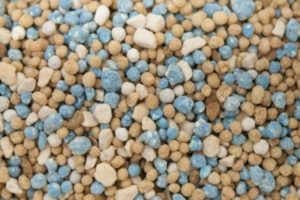 Complete fertilizers are those that contain all three of the primary nutrients. Complete fertilizers require Nitrogen, phosphorus in the form of phosphoric acid, and potassium in the form of potash. These three elements are prominently displayed on every bag of fertilizer. The first number is nitrogen, the second is phosphorus, and the third is potassium. An example is 24-4–8. Remember to always spread fertilizer evenly. Avoid heavy applications or concentrated applications. This is particularly important if you are using soluble fast-release fertilizers, which can quickly burn your lawn in substantial concentrations.
Complete fertilizers are those that contain all three of the primary nutrients. Complete fertilizers require Nitrogen, phosphorus in the form of phosphoric acid, and potassium in the form of potash. These three elements are prominently displayed on every bag of fertilizer. The first number is nitrogen, the second is phosphorus, and the third is potassium. An example is 24-4–8. Remember to always spread fertilizer evenly. Avoid heavy applications or concentrated applications. This is particularly important if you are using soluble fast-release fertilizers, which can quickly burn your lawn in substantial concentrations.

